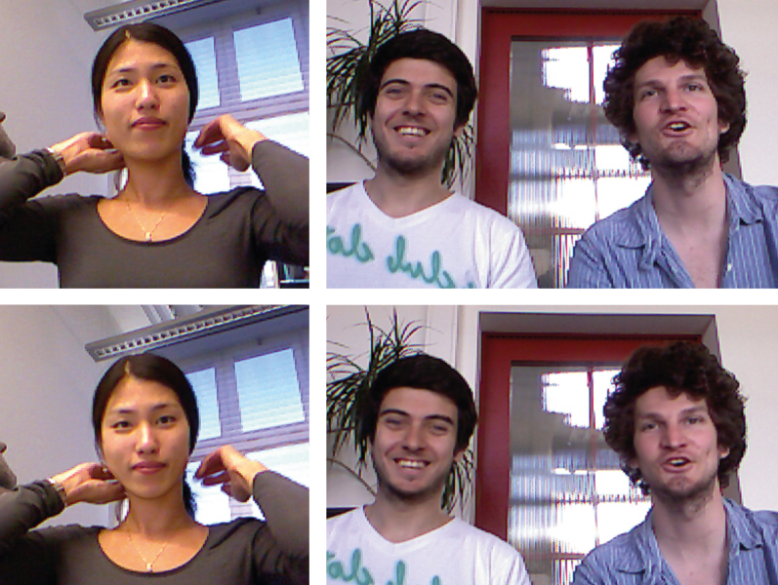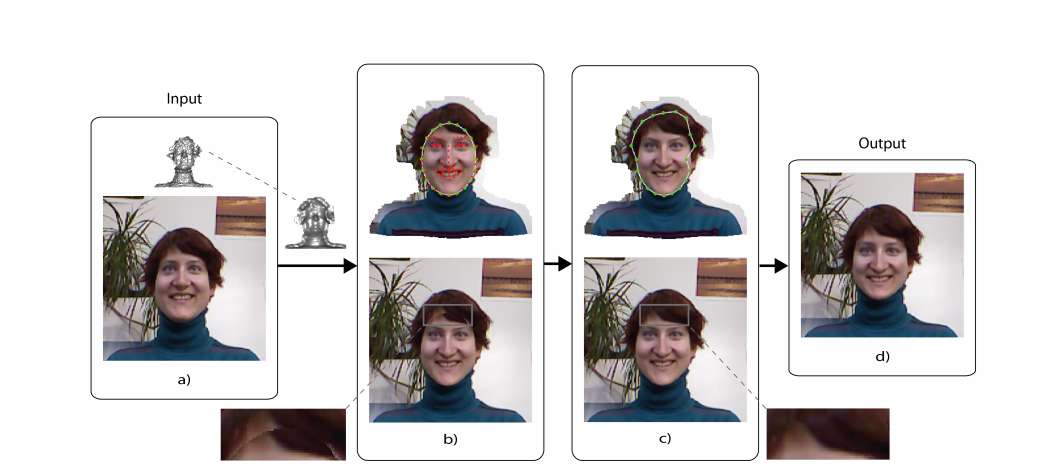Can Skype Fake My Eyes Looking Into Camera
Skype has been around for ten years now. Once a science fiction dream, the video calling service has 300 million users making two billion minutes of video calls a 24-hour interval. The only problem is, most of them tin can't look each other in the eye. Claudia Kuster, a doctoral pupil at the Calculator Graphics Laboratory ETH Zurich, and her team are developing a way to bring middle contact to Skype and like video services with software that alters the caller's on-screen image to requite the illusion that they're looking straight at the photographic camera.
Making a video call from your computer may be incredibly user-friendly, but it even so lacks that Gerry Anderson quality because it always seems as if the other person it staring at your chest or over your shoulder instead of making eye contact. That's considering the webcam is usually sitting over the screen, meaning it's transmitting an paradigm of yous looking at the screen, not the camera.
It is possible to restore center contact, but currently this involves complex and expensive systems using mirrors or multiple cameras and special software. Kuster's aim is to develop a solution that uses standard, or at to the lowest degree, simpler equipment and operates in real time.

The new system, which is still nether evolution, currently uses a Kinect to act as a depth sensor. Other than that the computer is fairly standard. "The software can be user adjusted in only a few elementary steps and is very robust," says Kuster.
The clever bit isn't how it takes an image, but in what it does with information technology. On current gaze-correction systems, the entire image is tilted. This requires a lot of computing ability and is prone to generating large gaps in the epitome. If you've ever used one of those insert-a-background camera applications without a green screen, the patchy results will be familiar
Instead of shifting the unabridged epitome, Kuster's organization only deals with the foreground. The Kinect builds upward a depth map of the prototype and isolates the person in it with a border area around it that is used to blend the person into the background. The software so plots a coordinate mask onto the person's features and calibrates it. The organization can then tilt the confront to the right angle to arrive expect as if eye contact has been made.

The adjacent step is to extract the face from the image using a state-of-the-fine art face tracker. This computes 66 feature points over the face and uses these to alter the tilted image so that it is consistent and synchronizes with the person's movements. The prototype is then pasted dorsum onto the person'southward epitome and blended in, so that things similar hairlines and shadows match.
As information technology does and then, the software adjusts for lighting, matches colors, handles two faces at once and deals with a multifariousness of face types and hairstyles. Information technology can even recoup for things like cups moving into the motion picture, though with less success. Nevertheless, information technology can't handle spectacles at this stage, which is a compassion.
Kuster and her team hope to develop software that volition piece of work with standard cameras not only in computers, simply as well tablets and smartphones. The eventual goal is to turn information technology into a Skype plug-in.
Source: ETH
Source: https://newatlas.com/skype-eye-contact/28843/
Posted by: cruzagivery1969.blogspot.com

0 Response to "Can Skype Fake My Eyes Looking Into Camera"
Post a Comment